Cataract Management in Navi Mumbai
Restore Clear Vision with Expert Diagnosis & Surgery
At Nair Super-Speciality Eye Hospital, we provide complete cataract care — from early-stage monitoring and prescription updates to stitchless phaco surgery and premium intraocular lenses (IOLs). With trusted specialists and advanced technology, we help patients regain sharp, vibrant vision in New Panvel and Kamothe.
- Advanced Phacoemulsification
- Custom IOL Options
- Trusted Since 2008
Schedule Your Cataract Consultation
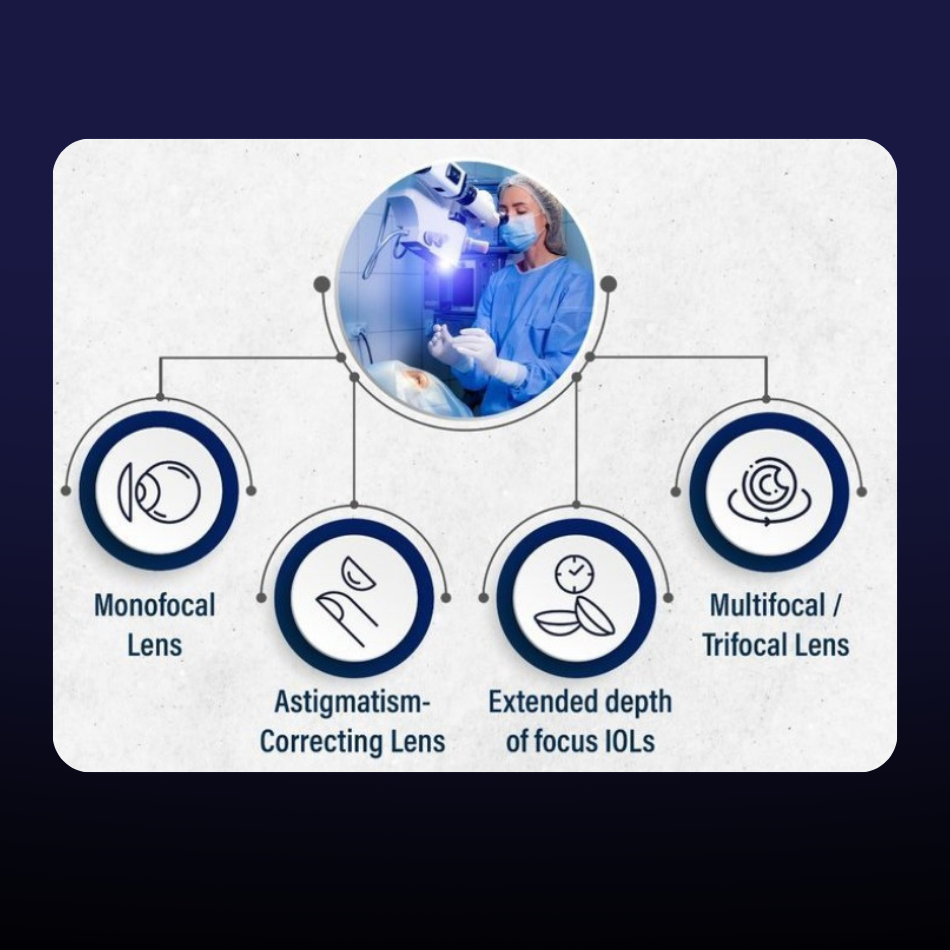
What is Cataract?
A cataract is a condition where the natural lens inside your eye becomes cloudy, leading to blurry or foggy vision. Though aging is the most common cause, cataracts can also develop from injury, diabetes, prolonged steroid use, or family history. If not treated in time, cataracts can affect daily activities such as reading, driving, or recognizing faces.
We offer complete cataract management — from early-stage evaluation and lifestyle guidance to precision cataract surgery.
Cataract Symptoms
If you’re experiencing any of the following, you may have a cataract:
- Blurred or cloudy vision
- Sensitivity to light or glare
- Difficulty seeing at night
- Halos around lights
- Colors appearing faded or yellowish
- Frequent prescription changes
- Double vision in one eye
- Trouble distinguishing contrast or depth
LOCATE US
Shop No 6, Nakshatra Bldg., Plot No 2 – 3, Sector – 20,
Near MNR Pre Primary School, Kamothe, Navi Mumbai – 410206

Causes & Risk Factors of Cataracts
Cataracts can result from aging, diabetes, eye injuries, smoking, UV exposure, prolonged steroid use, or genetic factors, gradually clouding the eye’s natural lens.

Natural aging of the eye lens

Long-term exposure to sunlight (UV rays)

Diabetes and poor blood sugar control

Prolonged use of steroid medications

Eye injury or past surgery

Smoking and alcohol use

Poor nutrition or low antioxidants

Family history or genetics
Types of Cataracts
We treat all types of cataracts including age-related, congenital, traumatic, secondary to diseases, and medication-induced, each affecting the eye’s lens in different ways.
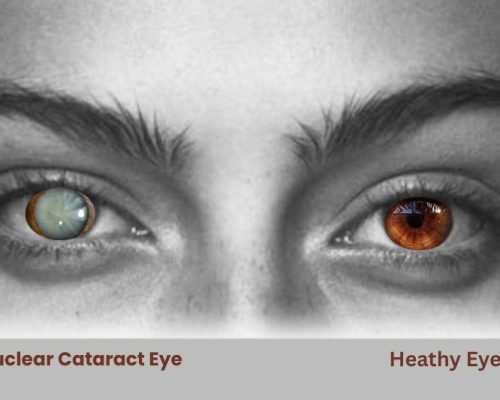
Nuclear Cataract
Develops in the center of the eye’s lens, usually due to aging. It causes gradual yellowing and hardening, leading to blurred central vision over time.
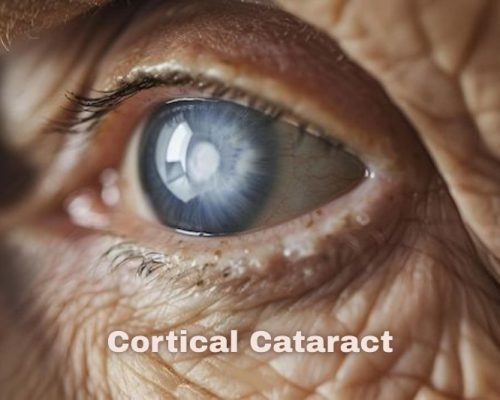
Cortical Cataract
Begins at the outer edges of the lens and grows inward like spokes. Often causes glare, halos, and difficulty seeing in bright or low light.
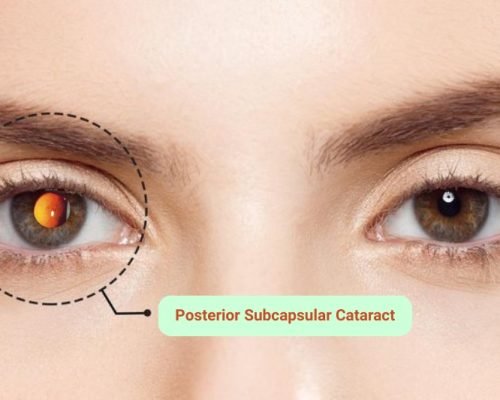
Posterior Subcapsular Cataract
Forms at the back of the lens and progresses rapidly. It affects near vision and causes glare in bright light or while reading.
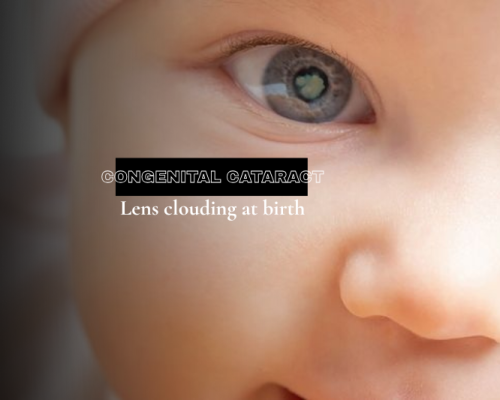
Congenital Cataract
Present at birth or early childhood, often due to genetic conditions, infections, or developmental issues. Can impair vision and requires early diagnosis and treatment.
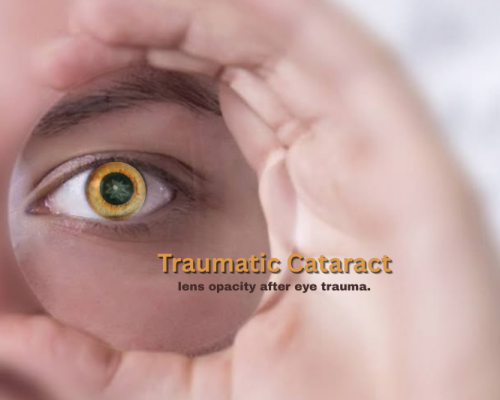
Traumatic Cataract
Occurs after an eye injury—either blunt or penetrating trauma. May form immediately or years later, affecting lens clarity and overall vision quality.
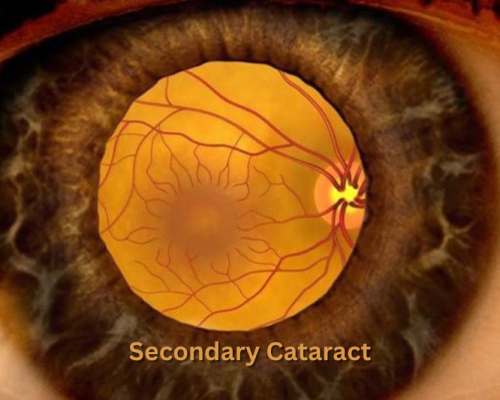
Secondary Cataract
Develops as a complication from other eye diseases, surgeries (like cataract surgery), or long-term steroid use. Often causes clouded vision similar to primary cataracts.
Non-Surgical Cataract Management
For early-stage cataracts, surgery may not be needed. Our team offers non-surgical management options such as:

Regular monitoring of vision

Prescription updates for glasses or contact lenses

Brighter lighting and magnifying lenses for reading

Nutritional advice to support lens health with antioxidants

Lifestyle guidance on managing diabetes, quitting smoking, and protecting eyes from UV light

Advanced Cataract Surgery
When cataracts begin to interfere with daily life, surgical removal is the most effective treatment. We offer two proven techniques:
Phacoemulsification (Stitchless Surgery)

Tiny incision (no stitches required)

Foldable IOL implanted

Faster healing and minimal discomfort

Ultrasound used to break and remove the cloudy lens

Painless procedure done with local anesthesia (eye drops)
Phacoemulsification (Stitchless Surgery)

Suitable for very hard or dense cataracts

Larger incision with lens removed in one piece

Requires stitches and has a longer recovery period
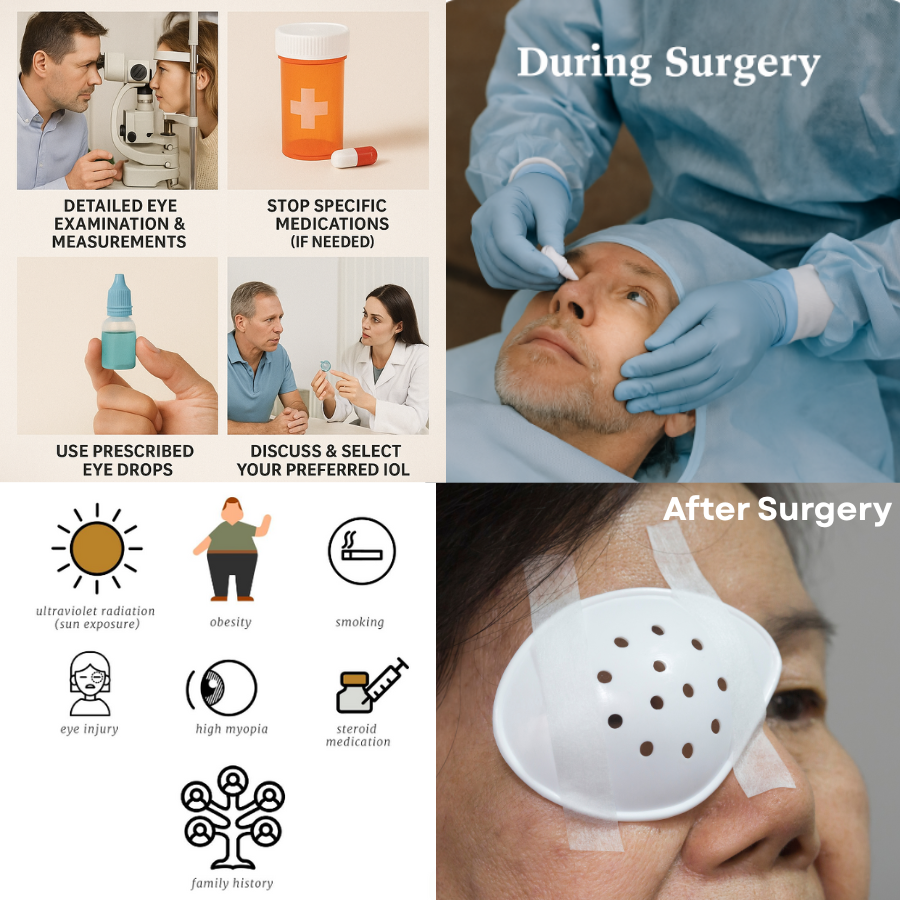
- Detailed eye examination and measurements
- Stop specific medications (if needed)
- Use prescribed eye drops
- Discuss and select your preferred IOL
- Quick, painless procedure with eye drops (local anesthesia)
- Lasts about 30–60 minutes
- No hospital stay required
- Eye shield for protection
- Antibiotic and anti-inflammatory drops
- Avoid eye rubbing, lifting heavy objects, and water exposure
- Vision clears within a few days
- Full recovery in 4–6 weeks
- Faster recovery and clearer results
- Less stress on the eye with early removal
- Better surgical outcomes
- Restores independence, confidence, and color clarity
Frequently Asked Questions
No. It’s done under local anesthesia using eye drops. You’ll feel only mild pressure, not pain.
No, but a “secondary cataract” (posterior capsule opacity) may develop and can be corrected easily with a laser.
Your new lens is permanent and lasts a lifetime in most cases.
With advanced IOLs like multifocal or toric, many patients reduce or eliminate their dependence on glasses.

Book Your Cataract Consultation Today
Clearer vision is one step away.
Call now to schedule your cataract consultation at our New Panvel or Kamothe clinics.
Experience compassionate care, advanced eye technology, and a better quality of life.
